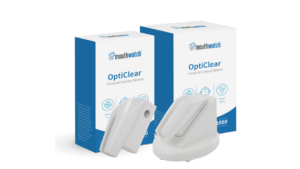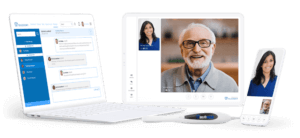No, you won’t be using a remote robot to deliver a root canal, or guiding a patient on a DIY root canal at home!
You can use teledentistry with TeleDent to deliver procedures more efficiently at your practice, and more conveniently for the patient.
Here’s a few of the ways that can look:
1. Shortening the journey to treatment by identifying inflammation and infection pre-treatment
How often has a patient come to the office and they need an antibiotic prescription to reduce inflammation and infection before you can take the next step? They’ve made a trip and you’ve used staff time, valuable chair time, and had possible room turnover and PPE costs.
How does TeleDent help?
Inflammation and infections can in many cases be triaged on a virtual appointment and a prescription delivered, while you schedule them for their now better prepped in-office appointment.
2. Post-op Check-ins
How many post-op check-ins have you provided that have taken chair time that could have been used for treatment? Nine times out of ten a post op is only a visual inspection to evaluate healing, which can be successfully accomplished virtually. The patient has made a trip and needed to arrange child-care or time off work, and again, you have the overhead of an in-office visit for a non-productive appointment.
How does TeleDent help?
Schedule a TeleDent appointment and preserve goodwill while preserving chair time for treatment needs and enhancing patient convenience.
3. Better Communication for Better Case Acceptance
Could your case acceptance rate improve, especially for high-end cases? Including the decision makers in treatment consultations with visually compelling plans increases the likelihood the value of treatment is expressed and understood, ultimately increasing acceptance.
How does TeleDent help?
With intraoral images, radiographs and other clinical data included in a visual treatment plan built in TeleDent, they have the information they need in a way they will understand.
Plus, you can then schedule a virtual appointment to go over the treatment plan with their spouse or other stakeholder from their home without requiring a trip to the office.








